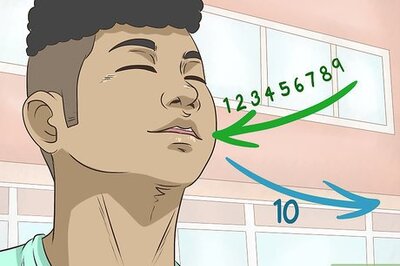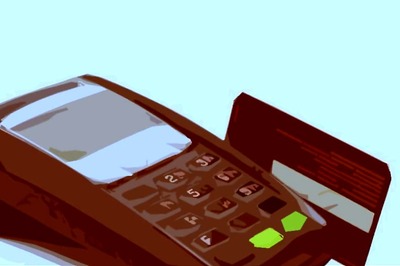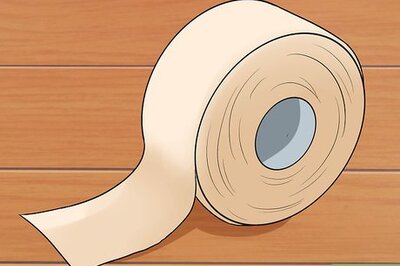
views
Restart your computer.
Clear your memory. The easiest way to clear your RAM cache is to save your work and restart your computer. When you restart your computer, it clears all the data in your memory. When your computer boots back up, the memory will be fresh and ready to use.
Close background apps.
You have too many apps running at once. Closing some background tasks and apps that you're not currently using can free up some memory for your computer to use and improve performance. You can shut down any apps you are currently running inside the app. Use the following steps to end program and background tasks in Windows. Press Ctrl + Alt + Del. Click Task Manager. Click the Processes tab. Click a process that's taking up a lot of RAM (check the "Memory" column). Click End Task.
Close your browser tabs.
You have too many tabs open. Browser tabs in your web browser can take up a lot of memory. If you have too many tabs open in your browser, click the "x" icon in the tabs you're not using to close them. Alternatively, you can try using a different web browser. If you have any extensions on your browser that you don't use, you may want to remove them as well.
Limit the number of startup programs.
Too many programs are launching at startup. If you find your memory is getting full soon after starting your computer, you may have too many programs launching at startup with your computer. For some programs, you may need to disable launch at startup in the program's settings menu. Use the following steps to limit the number of startup programs on your Windows computer: Click the Windows Start menu. Click the Settings/Gear icon. Click Apps. Click Startup Click the toggle switch next to the apps you don't want starting up with your computer.
Delete your temp files.
You have accumulated too many temp files. Temp files are temporary files that are used by various programs to temporarily store data, move files, manage settings, and more. Over time, they can accumulate and start to eat up your memory. Use the following steps to delete your temp files: Press Windows Key + R to open Run. Enter %temp% in Run an click Ok. Press Ctrl + A to select everything. Press the Delete key.
Update your drivers and software.
Your drivers and software are outdated. Old software versions and driver versions may take up more memory. Newer versions of software and drivers may be optimized to use fewer resources, including memory. Be sure to update all the programs you use. You can update your drivers by updating Windows, use the following steps to do so: Click the Windows Start menu. Click the Settings/Gear icon. Click Windows Update (Windows 11). or Update & Security (Windows 10). Click Windows Update (Windows 10). Click Check for Updates. Click Install Now.
Disable visual effects.
Visual effects use more memory. Visual effects can look pleasing to the eye, but sometimes you would rather your computer run properly than look pretty. Luckily, Windows allows you to optimize visual effects for performance rather than appearance. Use the following steps to adjust your computer's visual effects: Press Windows Key + R to open Run. Enter sysdm.cpl in Run an click Ok. Click the Advanced tab. Click Settings in the "Performance" box. Select Adjust for best performance. Click Apply.
Clear the page file upon shutdown.
The page file may be cluttered. Page files have many functions. One of which is to store infrequently accessed data from the RAM. While RAM is cleared when you restart your computer, page files are not. Clearing the page files can help reduce the amount of RAM cache your computer uses. Use the following steps to set your system to clear the page file when your computer shuts down: Press Windows Key + R to open Run. Enter regedit in Run an click Ok. Navigate to: HKEY_LOCAL_MACHINE > SYSTEM > CurrentControlSet > Control > Session Manager > Memory Management. Double-click ClearPageFileAtShutdown Set the "Value data" to "1". Click Ok. Restart your computer.
Install more RAM.
You don't have enough RAM. While clearing your RAM cache may temporarily boost performance on your PC, it is often a band-aid solution to a greater problem. You don't have enough RAM. Most computers have expandable RAM slots on the motherboard. You will need to research your computer model to see what type of motherboard it has and what type of RAM chips it's compatible with. Then you can purchase additional RAM chips and install them in your computer to increase the amount of RAM you have.


















Comments
0 comment